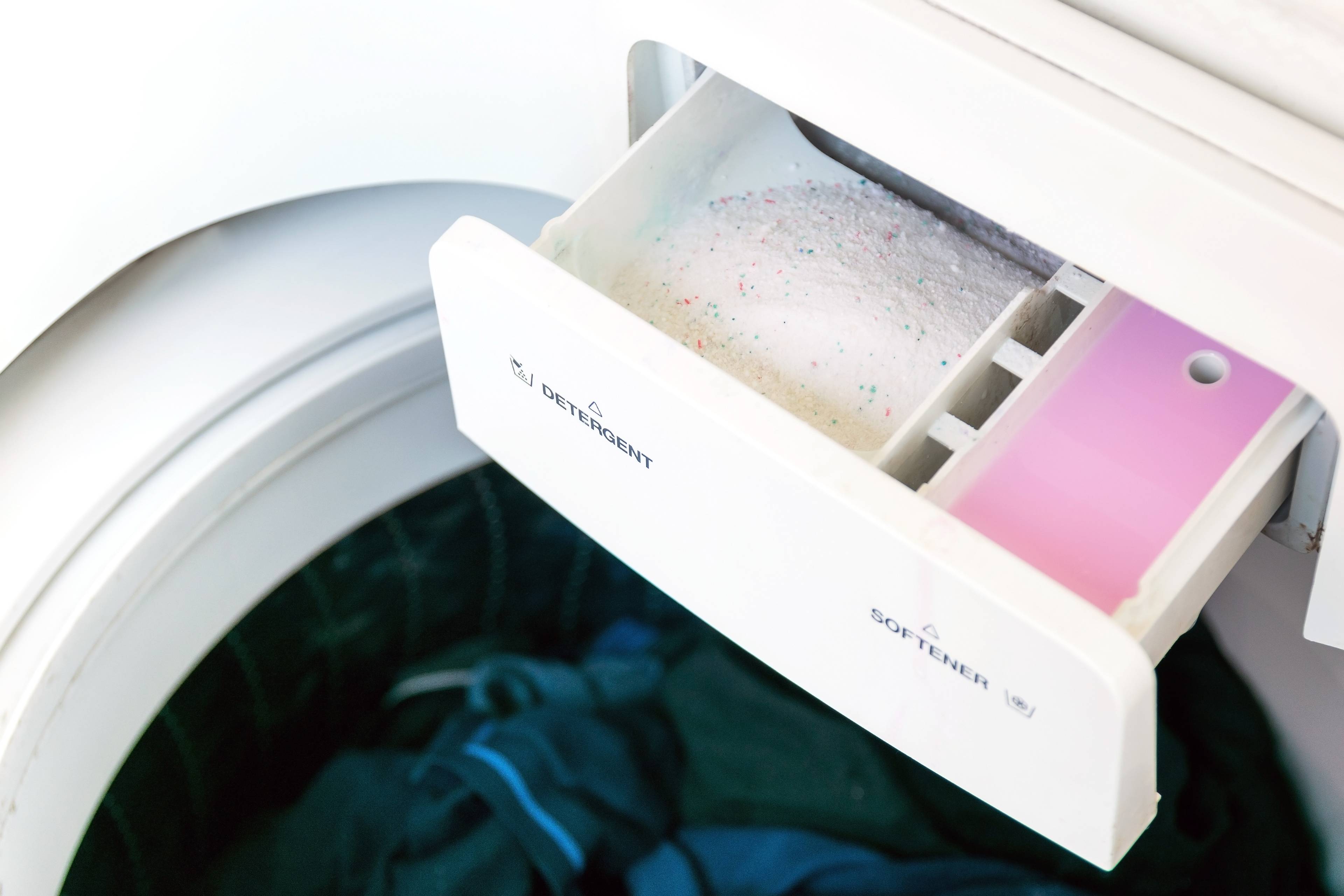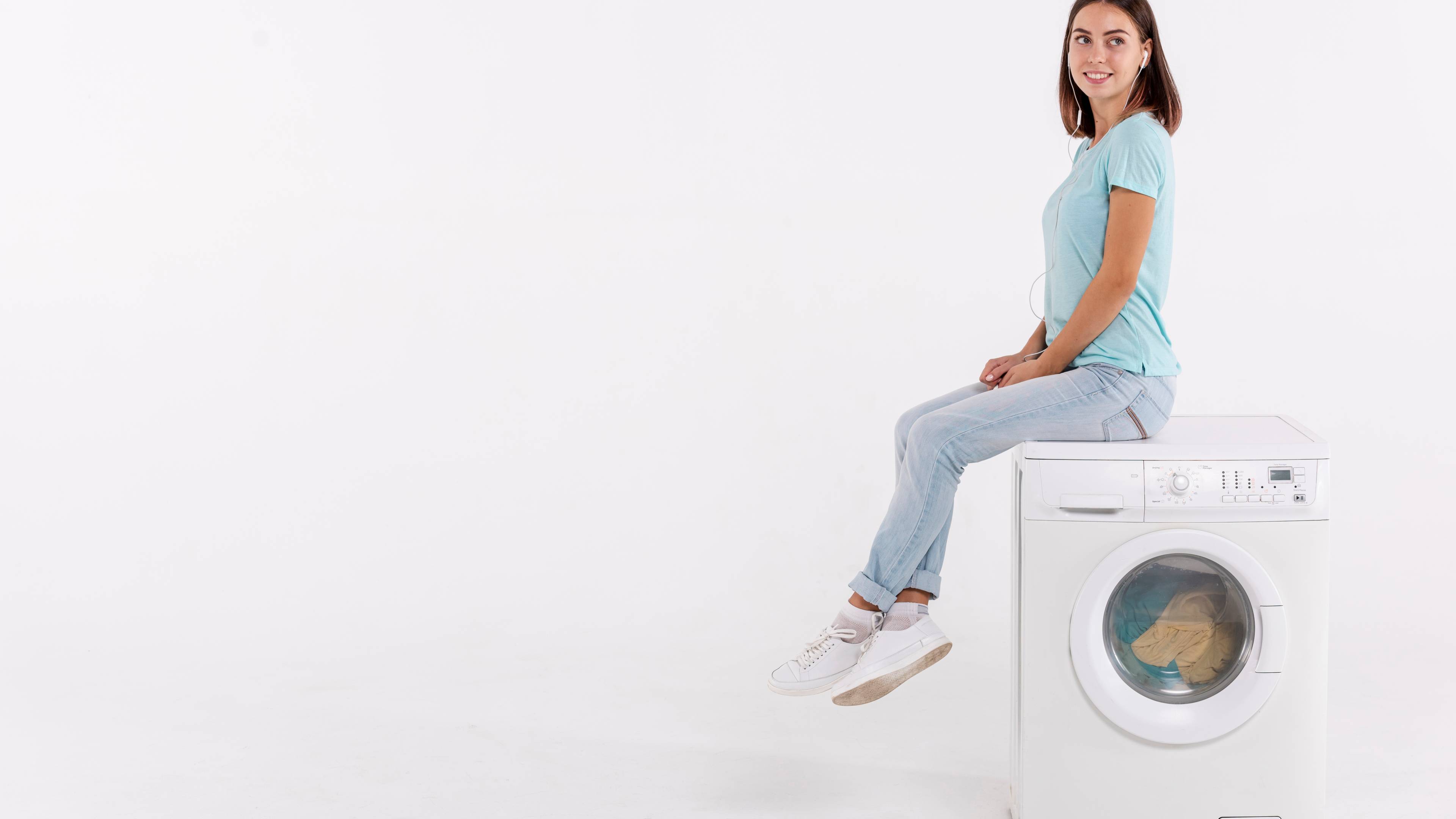Table of contents
- What you'll need before you start
- Step 1: Read the instruction manual
- Step 2: Run a clean cycle and remove detergent residue
- Step 3: Disconnect the washing machine safely
- Step 4: Drain excess water
- Step 5: Secure the drum
- Step 6: Wrap and protect your washing machine
- Step 7: Use a dolly and move carefully
- Step 8: Load into the moving vehicle
- Step 9: Setting up in your new home
Introduction
Whether you're upgrading to a new washing machine or relocating to a new house, moving a heavy appliance like this requires caution, preparation, and the right tools. Washing machines weigh a lot—often over 60 kg—and improper handling can damage your appliance or cause injury. But with the correct method, you can transport your washer safely and stress-free as part of your moving process.
What you'll need before you start
Before tackling the task of moving your washing machine, it’s crucial to gather all the necessary supplies. Having the right tools on hand will help you complete the moving process efficiently and without unexpected delays. Whether you're storing the unit, loading it into a moving van, or transporting it to your new house, preparation is key.
Here’s a full checklist of what you'll need:
- Appliance dolly or furniture dolly – An absolute must for transporting a heavy appliance like a washing machine. These are designed to carry weighty loads and minimise strain on your body. Ensure your dolly has securing straps and handles for better control.
- Packing tape and duct tape – You’ll use these to seal any loose components, hold protective materials in place, and tape the washing machine door shut during transport.
- Washer locks or shipping bolts – These small metal rods are essential to secure the washing machine drum and protect the suspension mechanism. If you don’t have the originals, replacements can often be found at a local home appliance store.
- Furniture blankets or moving blankets – Wrap the washing machine in these to prevent surface scratches, especially if it’s being moved alongside large appliances.
- Cardboard box or plastic bag –: Use this to store loose parts like the drain hose, power cord, and water supply hose. Label it clearly and attach it to the rear side of the machine so nothing gets lost.
- Slip joint pliers – These are ideal for detaching the water supply hose and drain hose attached to your washer, particularly if they've been tightly secured.
- Small bucket and clean cloth – These will help you manage any excess water when disconnecting the hoses. You’ll also want to give the washer a wipe-down before wrapping it.
- Washer cleaner – It’s good practice to run a clean cycle before moving to flush out any detergent residue or dirty water.
- Packing materials – Optional but helpful, especially if you're storing the washer for a while. Bubble wrap, foam sheets, or corner guards can provide extra protection.
Consider visiting the HOLD box shop for moving supplies, including protective blankets, packing tape, and heavy-duty cardboard boxes.
Step 1: Read the instruction manual

Every washing machine is slightly different. Before you unplug anything, consult the user manual or instruction manual provided by the washing machine manufacturer. If you’ve misplaced it, a quick Google search using your model number should help you find a digital copy. Pay special attention to guidelines about:
- Disconnecting water hoses
- Installing transit bolts or washer locks
- Draining the machine
Step 2: Run a clean cycle and remove detergent residue

Before disconnecting your washer, it’s essential to run a clean cycle. This helps flush out detergent residue, dirt, and dirty water. It’ll also prevent any lingering smells in transit. Once the cycle is complete, leave the washing machine door open for a few hours to allow it to air out and dry.
Tip: Use a washer cleaner during the clean cycle for best results.
Step 3: Disconnect the washing machine safely
Start by turning off the water supply valve and unplugging the washing machine’s electrical cord from the socket. Safety is key here—make sure your hands are dry to avoid electric shock, and never pull the power cord out by the cord itself.
Next, disconnect the water supply hose and drain hose. Use slip joint pliers to loosen the hose connectors gently. Place a small bucket or towel underneath to catch any excess water that may still be inside the hoses.
Step 4: Drain excess water

You might be surprised at how much water can remain in the system, especially in the wastewater canal and hoses. You can manually drain this by lowering the drain hose into a bucket. Ensure the drain hose attached to the washing machine is fully emptied before wrapping it up for transport.
Step 5: Secure the drum
The washing machine drum is suspended within the machine by a drum suspension mechanism. During transport, this component is particularly vulnerable to damage due to sudden jerking motions. To prevent damage:
- Use the transit bolts or shipping bolts (also referred to as small metal rods) that came with your washing machine.
- These keep the tub inside stable and prevent stress on the suspension mechanism.
If you've lost the bolts, check with a local home appliance store or contact the manufacturer for replacements.
Step 6: Wrap and protect your washing machine
Now it's time to prepare your washing machine for the move:
- Wrap it in furniture blankets or moving blankets to protect the exterior.
- Secure the blanket in place with duct tape or packing tape.
- Tape down the washer's surface controls, the rear side and the washing machine door to prevent it from swinging open.
Store the power cord and water hoses in a plastic bag or cardboard box and tape it securely to the back or side of the appliance so they don’t get lost in the move.
Step 7: Use a dolly and move carefully
A heavy appliance like a washer should never be carried without help or equipment. Always:
- Use an appliance dolly or furniture dolly.
- Tilt the washer backwards slightly and slide the dolly under it.
- Secure it with straps or ropes.
- Use at least a couple of strong people to support the move.
When using a dolly, carefully step down each stair with support from a second person, keeping the washing machine upright and balanced at all times.
Step 8: Load into the moving vehicle
Now, it's time to load your washer into the moving truck or moving van:
- Position it upright against the side of the van.
- Use ropes to tie it to the side rails, preventing it from shifting during transit.
- Place washing blankets or furniture blankets between the machine and other large appliances or boxes.
Avoid stacking anything on top of the washing machine to prevent dents or damage.
Step 9: Setting up in your new home
Once you've reached your new house, take care when unloading:
- Use the dolly again and reverse the steps from loading.
- Once placed in position, remove the transit bolts and reconnect the water valve.
- Attach the water hoses to the water pipes, ensuring the washer is connected securely before turning the water supply back on.
- With the washer connected to the water pipes and plugged into the socket, you can now run a test cycle to check that everything is working correctly.
- Plug the washer into the electrical outlet.
- Run a short rinse or clean cycle to check if everything, including the tumble dryer, is functioning as expected.
Conclusion
Moving a washing machine doesn’t have to be daunting, especially when you follow a step-by-step guide and have the right tools ready. From disconnecting hoses to securing the drum and using a dolly safely, each stage plays a key role in protecting both you and your appliance.
Take your time, avoid sudden jerking motions, and always keep the washer upright. Whether you’re relocating, replacing, or storing your washing machine, proper preparation helps prevent damage and saves money in the long run.
Store your furniture with ease at HOLD

Storing your washing machine, or any major appliances, with HOLD can help you save money during your move by providing flexible, cost-effective space, especially if you're in between properties.
HOLD Self Storage offers clean, modern furniture storage in the heart of London, with 24/7 access and just minutes from King’s Cross. From large appliances to full household moves, our flexible storage options and expert support make every step easier.
We also stock all the necessary supplies to help with your move, including furniture blankets, packing tape, and cardboard boxes. Visit our box shop to browse all moving essentials.
Get a free quote and 50% off HOLD Storage units today.
Frequently asked questions
How can I safely move a washing machine by myself?
You should never attempt to move a washing machine entirely on your own. Always use an appliance dolly and ask for help from a removal company or hire professional movers who have the necessary tools to avoid injuries and damage.
Do I need to keep my washing machine upright during transport?
Yes, always transport your washing machine in an upright position. Tilting it can damage the drum suspension mechanism and lead to expensive repairs.
Can I store a washing machine at HOLD Self Storage?
Absolutely. HOLD Self Storage units are perfect for storing large appliances, including washing machines. Our facilities are clean, secure, and accessible 7 days a week.
Does HOLD offer moving supplies?
Yes, HOLD offers a wide range of moving supplies through our box shop, including packing tape, furniture blankets, cardboard boxes, and more.
What are transit bolts, and why are they important?
Transit bolts stabilise the washing machine drum during transit and prevent internal damage. If you don’t have your original bolts, contact your washing machine manufacturer or a local home appliance store.


